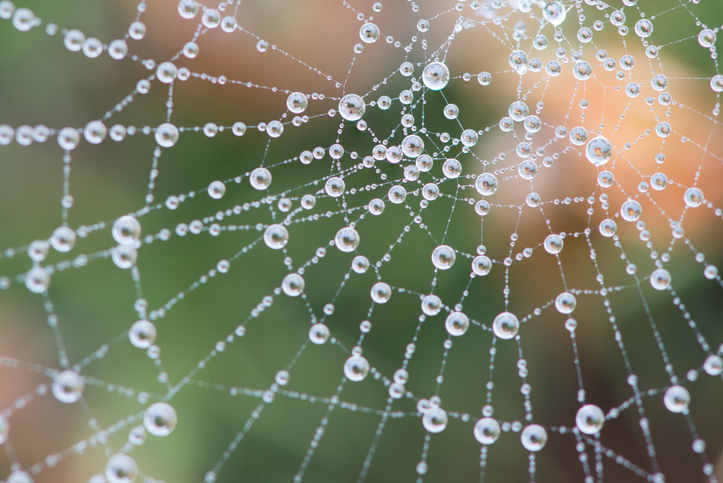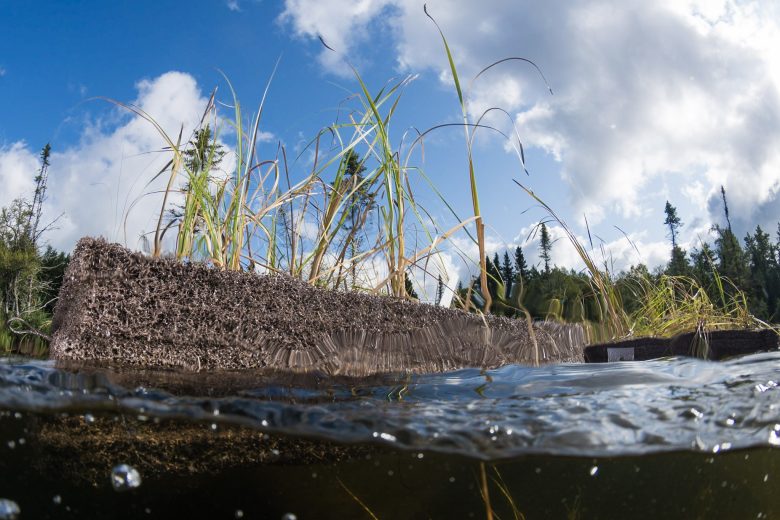Comment July 20, 2022
What Is Biomimetics? And what can it mean for fresh water?
By Matthew Pries, Sumeep Bath, Editorial & Communications Manager
Matthew Pries (MP), when he is not spending summers working in our chemistry laboratory, spends his time exploring the fascinating world of biomimetics.
During a week when Matthew was temporarily holed up at home away from the world’s freshwater laboratory, our editorial and communications manager, Sumeep Bath (SB), took the opportunity to sit down with him to discover more about biomimetics and what the process could mean for freshwater protection.
In 500 words or fewer, of course…
SB: You’ve got 100 words (or fewer) to explain what biomimetics is. Go!
MP: Biomimetics basically means looking to nature for design ideas and solutions to our problems. From looking at the ways different organisms or ecosystems have solved problems or arranged themselves, we can extrapolate to systems built and designed by humans.
A classic example is making fibers based on spider silk to replicate its incredible physical properties. Importantly—in addition to inspiring specific solutions—biomimetics also offers a way to evaluate the suitability of our designs by judging them against ecological standards.
Do our solutions share the features that characterize robust natural ones? Are they resilient, mutually beneficial, and efficient?
SB: 98 words. Great job! So, how can biomimetics be applied to how we deal with freshwater systems?
MP: One of the biggest challenges for good water management is ensuring access to clean water.
A biological strategy that addresses this is aquaporin proteins. Present in the cells of organisms from all kingdoms of life, these proteins form channels that allow water to pass easily through the cellular membrane while preventing the passage of most solutes (substances dissolved in the water). The structure of the protein is such that the water is filtered using far less energy than would be required to pump it through traditional filters.
Numerous research groups have come up with ways this strategy can be scaled up and applied in the way we deal with our freshwater supplies.

SB: Over the last few decades, here at IISD we have been advancing natural infrastructure systems—like floating treatment wetlands—to respond to threats to fresh water. Do you consider those a form of biomimetic innovation?
MP: Definitely!
With an understanding of the functioning of natural systems we can design complex technologies to emulate certain biological mechanisms, or we can simply give a leg up to the organisms/communities already doing what we want. I think some of the most elegant biomimetic solutions are the ones that focus human intervention on creating or restoring good habitats for the organisms that solved the problem millions (or billions!) of years ago.
Natural infrastructure projects like floating treatment wetlands do just that and, depending on the scale, can also become biodiversity hotspots, providing myriad other benefits.
SB: You’ve been working in our chemistry laboratory for a few months now. Have you had a chance to apply any of your work on biomimetics to your work at the world’s freshwater laboratory?
MP: What I think is exciting about the work in the chemistry lab, and indeed all the work happening at IISD-ELA, is that it’s uncovering the workings of many different biological systems in varied circumstances. Our ability to envision, design, and implement effective biomimetic designs hinges on a deep understanding of the way natural systems operate, in all their complexity.
The analysis we do in the chemistry lab enables research that continues building that understanding, adding to the library of what we can learn from nature. So, while I’m up to my elbows in the sink making a dent in the interminable pile of dishes we generate in the lab, I remind myself that all the work is part of something greater.

SB: Now you’re back in the city for a couple of weeks as we try to limit access to the site. Are you eager to get back to the site?
MP: Absolutely.
To be working shoulder-to-shoulder with such an incredible team of people who bring so many different abilities and perspectives together is an inspiring experience. Not only that but being out at the site surrounded by the wonders of the forest makes for the perfect chance to learn from nature.
While many biomimetic inquiries require in-depth research and specific skills and equipment to learn how to do what nature does, all it takes is sitting amongst the trees to learn from nature how to be.